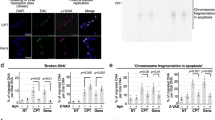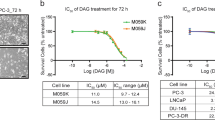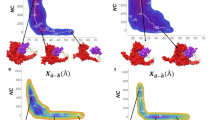Abstract
The cytoxicity of both intercalating (m-AMSA) and non-intercalating (VP16, VM26) topoisomerase II-targeting drugs is thought to occur via trapping DNA topoisomerase II on DNA in the form of cleavable complexes. First, analysis of cleavable complexes (detected as DNA double-strand breaks) by pulsed-field gel electrophoresis confirmed the correlation between cleavable complex formation and cytotoxicity of three topoisomerase-targeting drugs in HeLa S3 cells (the order of effects being VM26 > m-AMSA > VP16). In contrast to many antineoplastic agents, hyperthermic treatments were found to protect cells against the toxicity of all three topoisomerase II drugs. Hyperthermia treatment does not alter drug accumulation but reduces the ability of the drug-topoisomerase II complex to form the cleavable complexes. Nuclear protein aggregation induced by heat at the sites of topoisomerase II-DNA interaction may explain such an effect. In thermotolerant cells, the toxic effects of VP16 but not m-AMSA were reduced. For both drugs, however, the status of thermotolerance did not affect cleavable complex formation by the drugs. Thus, protection against VP-16 toxicity seems not to be associated with heat-induced activation of the P-gp 170 pump or altered topoisomerase II-DNA interactions. Rather, a protective (heat shock protein mediated?) mechanism against non-intercalating topoisomerase II drugs seems to occur at a stage after DNA-drug interaction. Finally, heat treatment before topoisomerase II drug treatment reduced toxicity and cleavable complex formation in thermotolerant cells to about the same extent as in non-tolerant cells, consistent with the presumption of nuclear protein aggregation being responsible for this effect.
This is a preview of subscription content, access via your institution
Access options
Subscribe to this journal
Receive 24 print issues and online access
$259.00 per year
only $10.79 per issue
Buy this article
- Purchase on Springer Link
- Instant access to full article PDF
Prices may be subject to local taxes which are calculated during checkout
Similar content being viewed by others
Author information
Authors and Affiliations
Rights and permissions
About this article
Cite this article
Kampinga, H. Hyperthermia, thermotolerance and topoisomerase II inhibitors. Br J Cancer 72, 333–338 (1995). https://doi.org/10.1038/bjc.1995.334
Issue Date:
DOI: https://doi.org/10.1038/bjc.1995.334
This article is cited by
-
Pericentromeric Satellite III transcripts induce etoposide resistance
Cell Death & Disease (2021)
-
Effects of hyperthermia on DNA repair pathways: one treatment to inhibit them all
Radiation Oncology (2015)
-
Prevention of chemotherapy-induced alopecia in rodent models
Cell Stress and Chaperones (2008)



